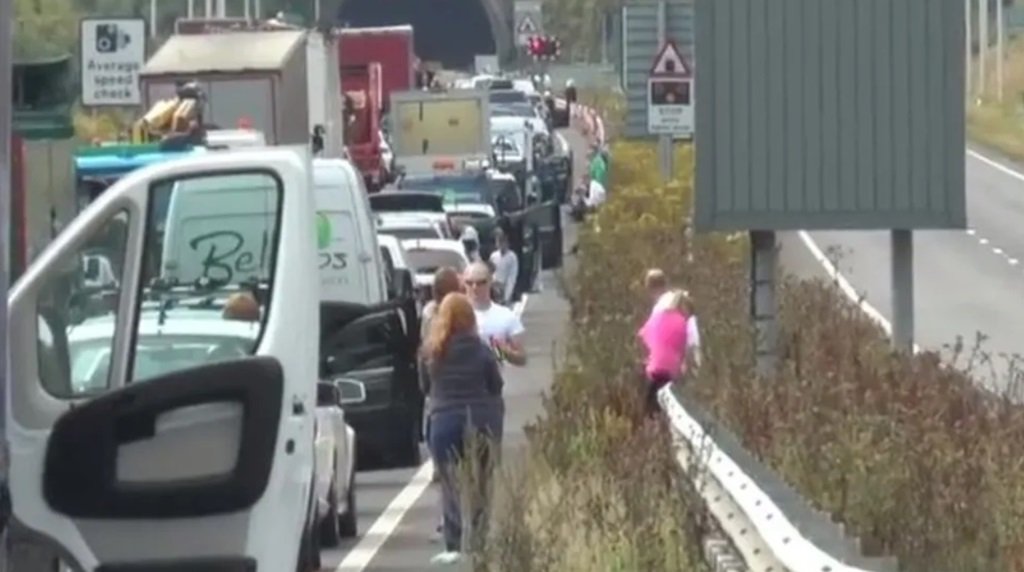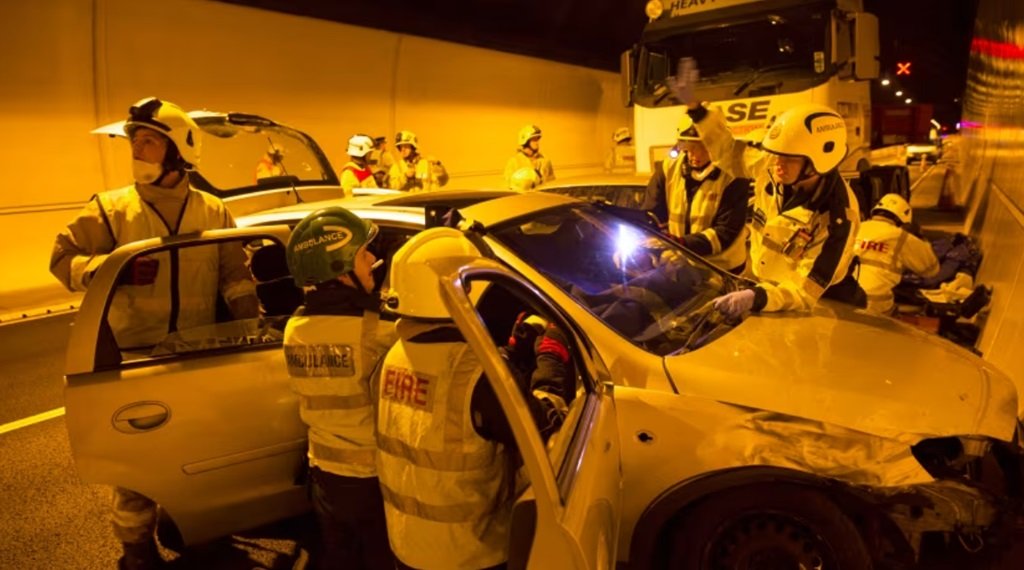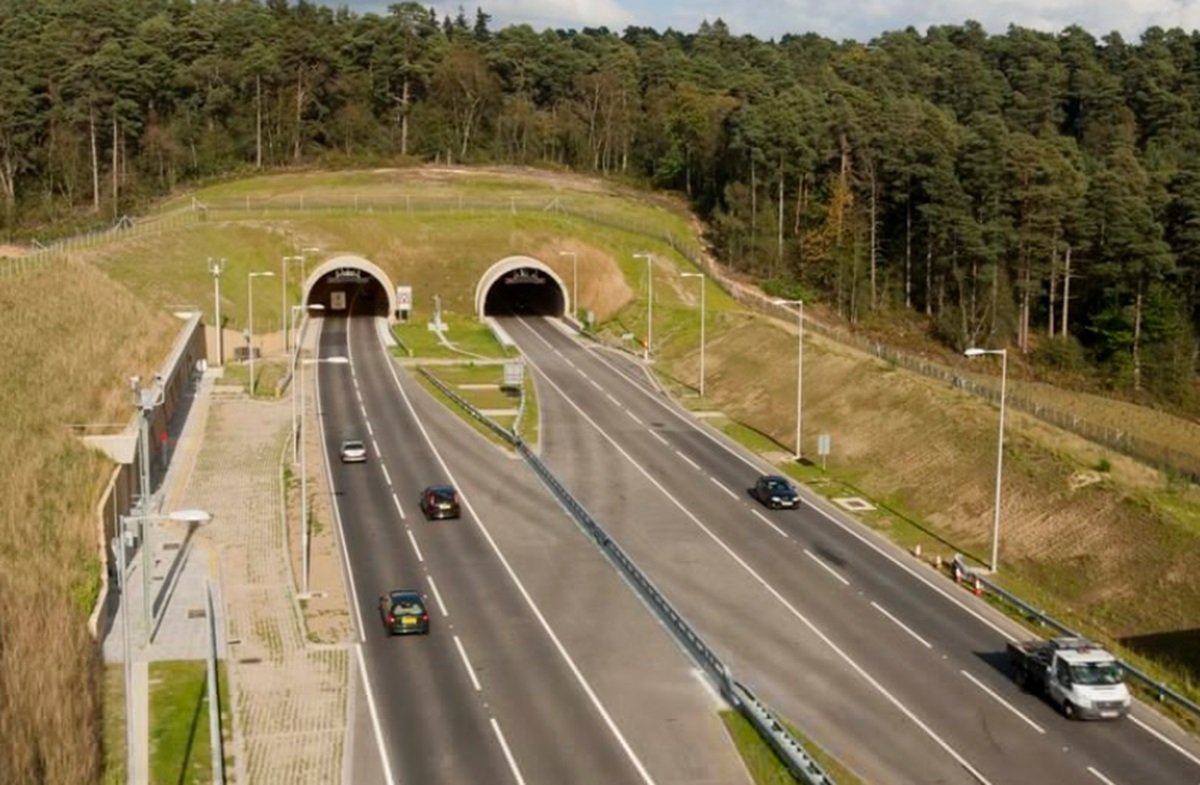Hindhead Tunnel accident today: what actually happened there? The unfortunate event evokes memories of a similar incident that occurred earlier this year.
On March 21, 2023, the Hindhead Tunnel was thrust into the spotlight once again when a crash involving two cars prompted the closure of the northbound lanes.
Traffic snarled as motorists navigated the ensuing gridlock, highlighting the vulnerability of this critical thoroughfare to unforeseen circumstances.
In the wake of the events, questions linger about the root causes of such accidents and the measures that can be taken to prevent their recurrence.
Whether through enhanced safety protocols, improved infrastructure, or heightened awareness among drivers, there is a pressing need to address the underlying factors contributing to these incidents.
Hindhead Tunnel Accident Today
The Hindhead Tunnel, an essential link on the A3 in Surrey, found itself at the center of a harrowing incident today.
A multi-vehicle crash rocked the tunnel, prompting authorities to swiftly close the southbound direction around 3:45 PM.

With emergency services scrambling to respond, chaos ensued as traffic ground to a halt, leaving commuters stranded and concerned.
The severity of the situation was evident as the closure persisted, causing significant disruptions to the flow of traffic.
Motorists were left with little choice but to seek alternative routes, compounding the strain on surrounding roads and infrastructure.
The impact rippled through the region, highlighting the interconnectedness of transportation networks and the vulnerability of vital arteries like the A3.
As the afternoon wore on, the efforts of emergency responders began to bear fruit. By 5:30 PM, the tunnel was declared safe, and the road was reopened, albeit with residual delays lingering in the aftermath.
While the reopening brought a sigh of relief to many, the incident served as a stark reminder of the fragility of our transportation systems and the potential consequences of a momentary lapse in attention or judgment.
The magnitude of the accident was further underscored by the involvement of multiple vehicles, indicating the complexity of the scene and the challenges faced by those tasked with restoring order.
The sheer scale of the operation necessitated the closure of not only the southbound tunnel but also its northbound counterpart, exacerbating the disruption and inconvenience for commuters.
Ultimately, the Hindhead Tunnel accident serves as a sobering reminder of the fragility of our transportation networks and the importance of remaining vigilant behind the wheel.
As commuters reflect on the day’s events and authorities assess the aftermath, one thing remains clear: the need for concerted efforts to ensure the safety and resilience of our roadways has never been more pressing.
Another such incident is Mai Mahiu Accident that caused huge stress among the people.
Amidst the anguish and heartbreak, the community rallied together once more, offering support and solace to those affected by the tragedy
Hindhead Tunnel Incident
On May 2, 2024, commuters traveling through Surrey’s Hindhead Tunnel found themselves ensnared in a frustrating ordeal as the northbound lanes were abruptly shuttered due to what authorities termed a “technology issue.”

The unexpected closure sent shockwaves through the region’s transportation network, causing extensive tailbacks stretching over two miles and disrupting the flow of traffic during peak travel hours.
The sudden disruption thrust the Hindhead Tunnel into the spotlight once again, underscoring the critical role it plays as a vital conduit for commuters traversing the A3.
With the northbound lanes rendered impassable, motorists were left grappling with the ripple effects of the closure, navigating congested alternate routes in a bid to reach their destinations.
While the closure of the northbound lanes cast a pall over the morning commute, there was a glimmer of relief for those traveling in the opposite direction.
Despite the technological glitch plaguing the tunnel, the southbound lanes remained operational, providing a lifeline for motorists seeking passage through the tunnel’s labyrinthine depths.
In the face of mounting frustration and inconvenience, National Highways moved swiftly to reassure the public that efforts were underway to rectify the issue.
Assurances were made that their contractors were mobilized and working tirelessly to identify and address the root cause of the technological malfunction, with the aim of restoring normalcy to the affected lanes at the earliest opportunity.
The incident serves as a stark reminder of the inherent vulnerabilities of relying on technology to underpin critical infrastructure.
While advancements in transportation technology have undoubtedly enhanced efficiency and safety, they also introduce new points of failure that can have far-reaching consequences when they malfunction.
As commuters languished in bumper-to-bumper traffic, speculation swirled about the nature of the “technology issue” that precipitated the closure.
Whether it was a glitch in the tunnel’s sophisticated monitoring systems, a malfunction in its ventilation or lighting systems, or a more obscure technical fault, the incident underscores the need for robust contingency plans and rapid response protocols to mitigate the impact of such disruptions.
As the day wore on and the efforts to resolve the issue continued, commuters were left to ponder the fragility of the systems upon which their daily lives depend.
While the closure of the northbound lanes may have been an inconvenience, it also serves as a sobering reminder of the delicate balance between technological innovation and the resilience of our infrastructure in the face of unforeseen challenges.
Another such devastating accident is Clelia Theodorou Car Accident, which has caused a lot of chaos on her life, leaving her with the two broken legs and two broken feet that she has to recover.
What Happened After Hindhead Tunnel Accident?
In the aftermath of the Hindhead Tunnel incident, there is a pressing need for reflection and introspection.
It is imperative that lessons are learned from today’s events, and proactive measures are taken to bolster the resilience of our transportation networks against future disruptions, whether they stem from technological glitches or other unforeseen circumstances.
Only by addressing these vulnerabilities head-on can we ensure the seamless flow of traffic and safeguard the well-being of commuters for years to come.














